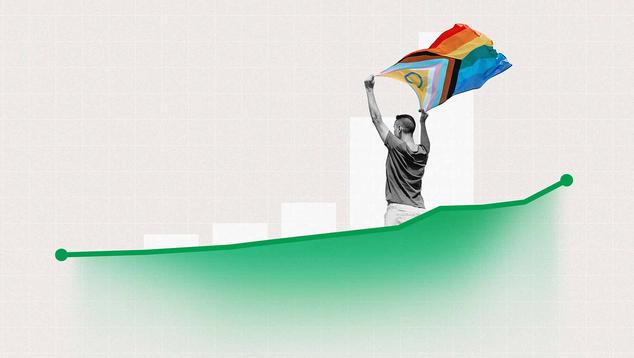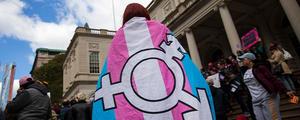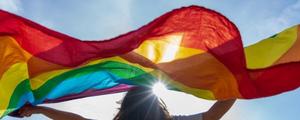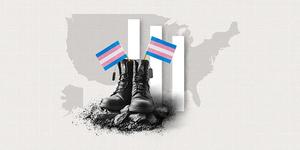WASHINGTON, D.C. -- Gallup’s latest update on LGBTQ+ identification finds 9.3% of U.S. adults identifying as lesbian, gay, bisexual, transgender or something other than heterosexual in 2024. This represents an increase of more than a percentage point versus the prior estimate, from 2023. Longer term, the figure has nearly doubled since 2020 and is up from 3.5% in 2012, when Gallup first measured it.
LGBTQ+ identification is increasing as younger generations of Americans enter adulthood and are much more likely than older generations to say they are something other than heterosexual. More than one in five Gen Z adults -- those born between 1997 and 2006, who were between the ages of 18 and 27 in 2024 -- identify as LGBTQ+. Each older generation of adults, from millennials to the Silent Generation, has successively lower rates of identification, down to 1.8% among the oldest Americans, those born before 1946.
LGBTQ+ identification rates among young people have also increased, from an average 18.8% of Gen Z adults in 2020 through 2022 to an average of 22.7% over the past two years.
Gallup has observed smaller growth in the percentage of LGBTQ+ identifiers in some older generations over the same time period. This includes a nearly two-point increase among millennials (from 10.3% to 12.0%) and a one-point increase among Generation X (from 3.8% to 4.8%). There has not been meaningful change among baby boomers or the Silent Generation.
The latest results are based on interviews with more than 14,000 U.S. adults across all 2024 Gallup telephone surveys. Each respondent is asked whether they identify as straight or heterosexual, lesbian, gay, bisexual, transgender or something else.
Overall, 85.7% say they are straight, 5.2% are bisexual, 2.0% are gay, 1.4% are lesbian and 1.3% are transgender. Just under 1% mention some other LGBTQ+ identity, such as pansexual, asexual or queer. Five percent of respondents decline to answer the question.
Among the nearly 900 LGBTQ+ individuals Gallup interviewed last year, more than half, 56%, said they were bisexual. Twenty-one percent said they were gay, 15% lesbian, 14% transgender and 6% something else. These figures total more than 100% because the survey allows respondents to report multiple LGBTQ+ identities. The overall estimate of 9.3% of U.S. adults who identify as LGBTQ+ counts each respondent only once, even if they have multiple identities.
One reason for higher LGBTQ+ identification among younger generations of adults is that they are much more likely to consider themselves bisexual than are older people. In fact, more than half of Gen Z (59%) and millennial (52%) LGBTQ+ people are bisexual. That drops to 44% among LGBTQ+ people in Generation X, and is less than 20% among baby boomers (19%) and Silent Generation (11%) LGBTQ+ adults. Older LGBTQ+ people are most likely to identify as gay or lesbian.
LGBTQ+ Identification Higher Among Women, Liberals, Urban Residents
Beyond generation and age, LGBTQ+ identification differs by gender, political orientation and urbanicity.
- Whether due to political sorting or something else, Democrats (14%) and independents (11%) are far more likely than Republicans (3%) to identify as LGBTQ+.
- Even stronger differences are seen by ideology, with 21% of liberals, compared with 8% of moderates and 3% of conservatives, saying they are lesbian, gay, bisexual or transgender.
- Ten percent of women versus 6% of men say they are LGBTQ+; the difference is mostly because women are more likely than men to say they are bisexual. Between 1% and 2% of U.S. adults identify their gender as nonbinary; of this group, about eight in 10 identify as LGBTQ+.
- The gender gaps are especially pronounced in the younger generations -- 31% of Gen Z women versus 12% of Gen Z men, and 18% of millennial women versus 9% of millennial men, identify as LGBTQ+, with most of these younger women saying they are bisexual.
- LGBTQ+ identification is higher among people living in cities (11%) and suburbs (10%) than in rural areas (7%).
- College graduates (9%) and nongraduates (10%) are about equally likely to identify as LGBTQ+.
- Differences in LGBTQ+ identification by racial, income, marital status, parental status and religious subgroups reflect age skews among those subgroups. For example, younger adults are less likely than older U.S. adults to be higher income, to be married, to have children, to be religious or to be Non-Hispanic White. Those groups, in turn, have lower rates of LGBTQ+ identification than lower-income, unmarried, nonparent, nonreligious and non-White Americans.
Bottom Line
In the 12 years that Gallup has been tracking LGBTQ+ identification, it has nearly tripled, as those becoming adults during that period have been far more likely than their elders to say they are lesbian, gay, bisexual or transgender. The recent increase is largely due to more adults in their late teens, 20s and 30s -- particularly young women -- saying they are bisexual. But younger adults are also more likely than older adults to identify as lesbian, gay, transgender or other nonheterosexual orientations. The rate of LGBTQ+ identification is likely to continue to grow, given the generational shifts underway.
To stay up to date with the latest Gallup News insights and updates, follow us on X @Gallup.
Learn more about how the Gallup Poll Social Series works.




